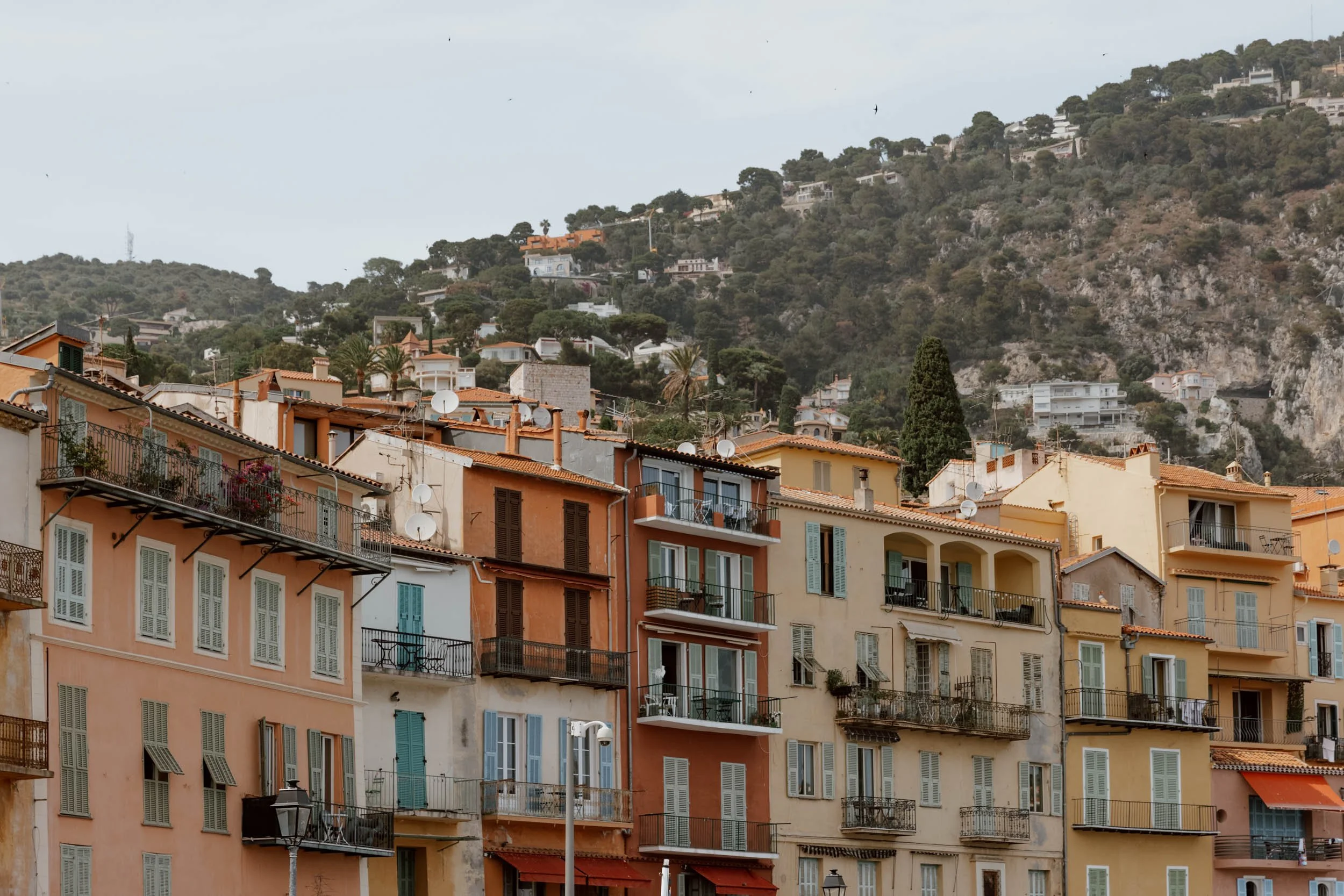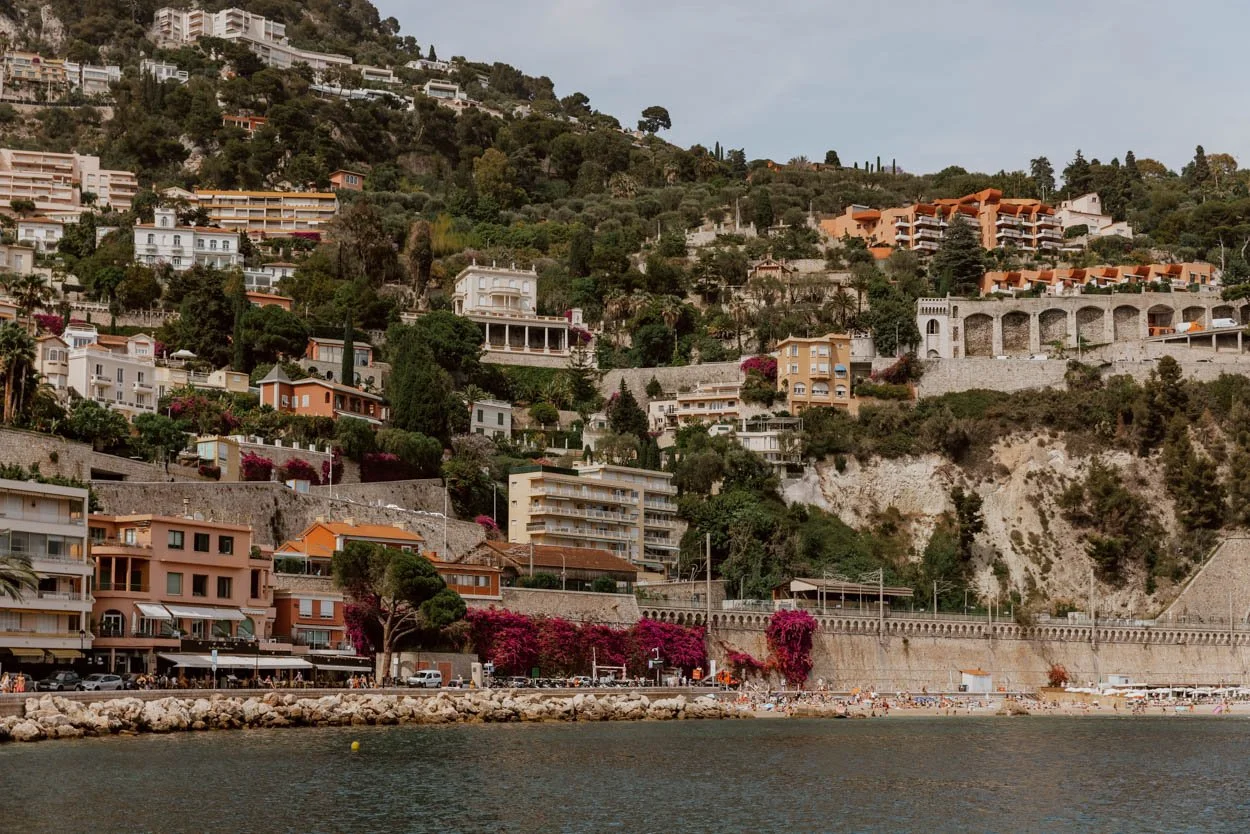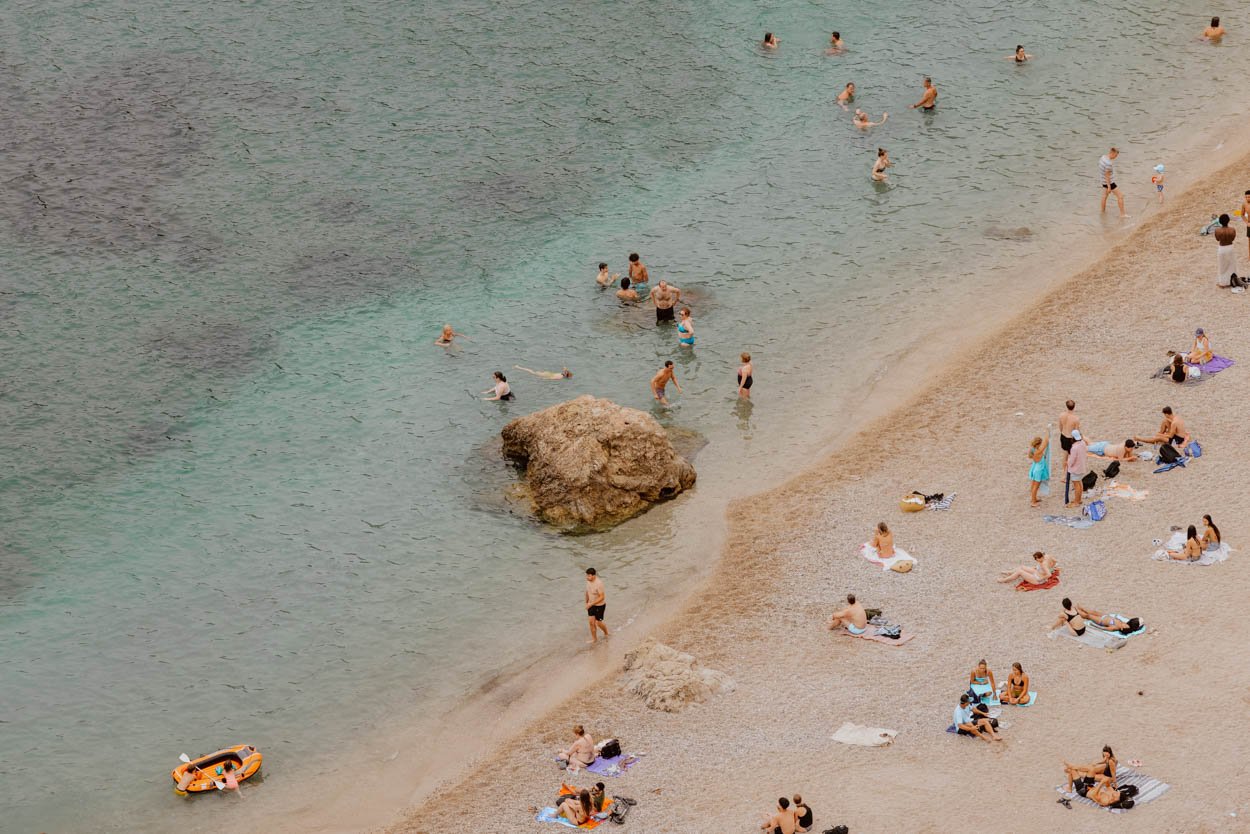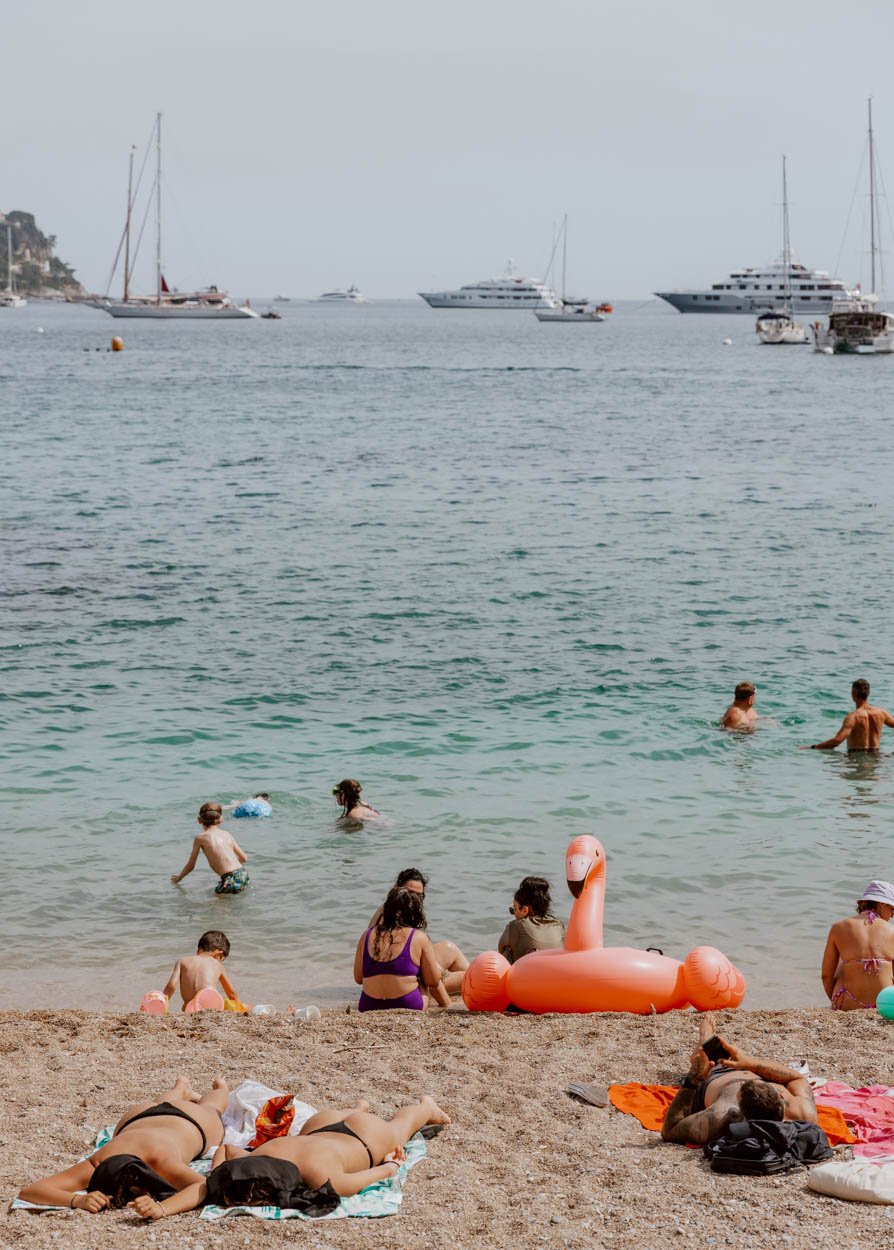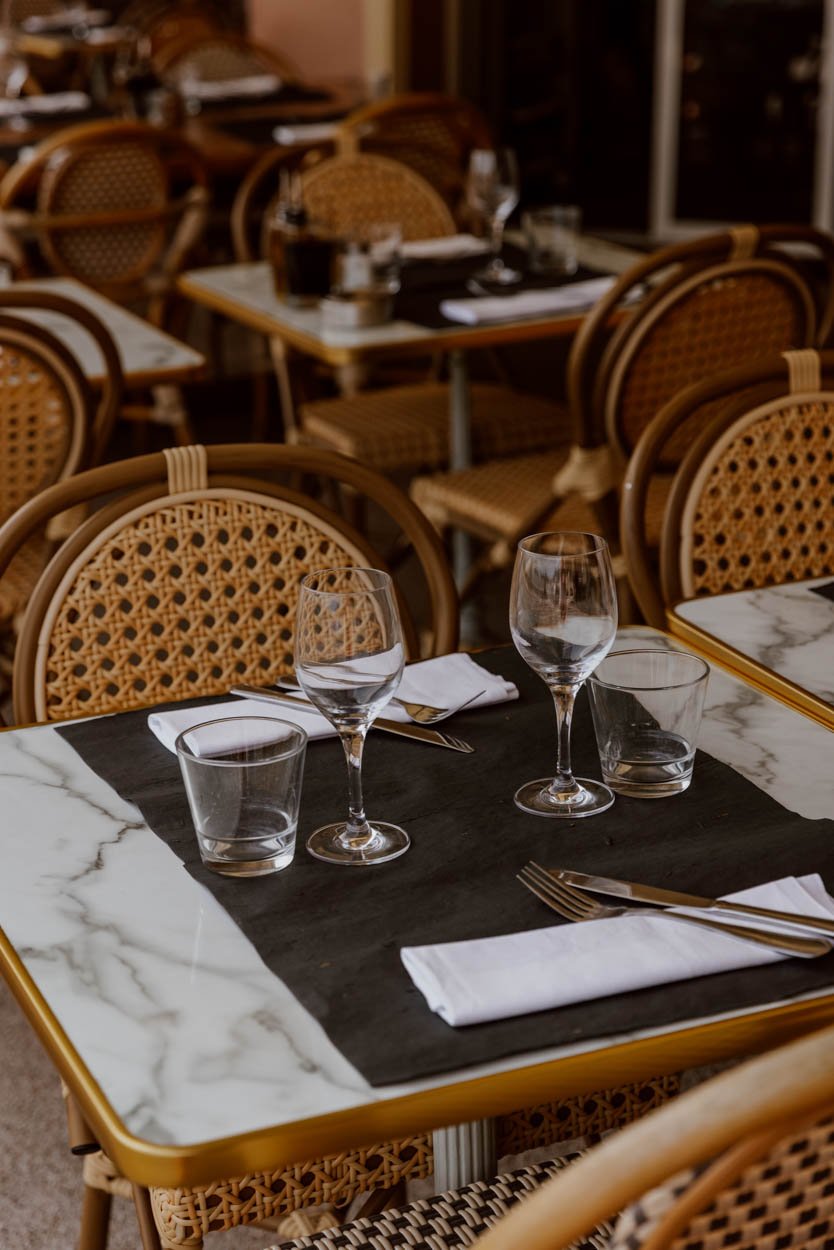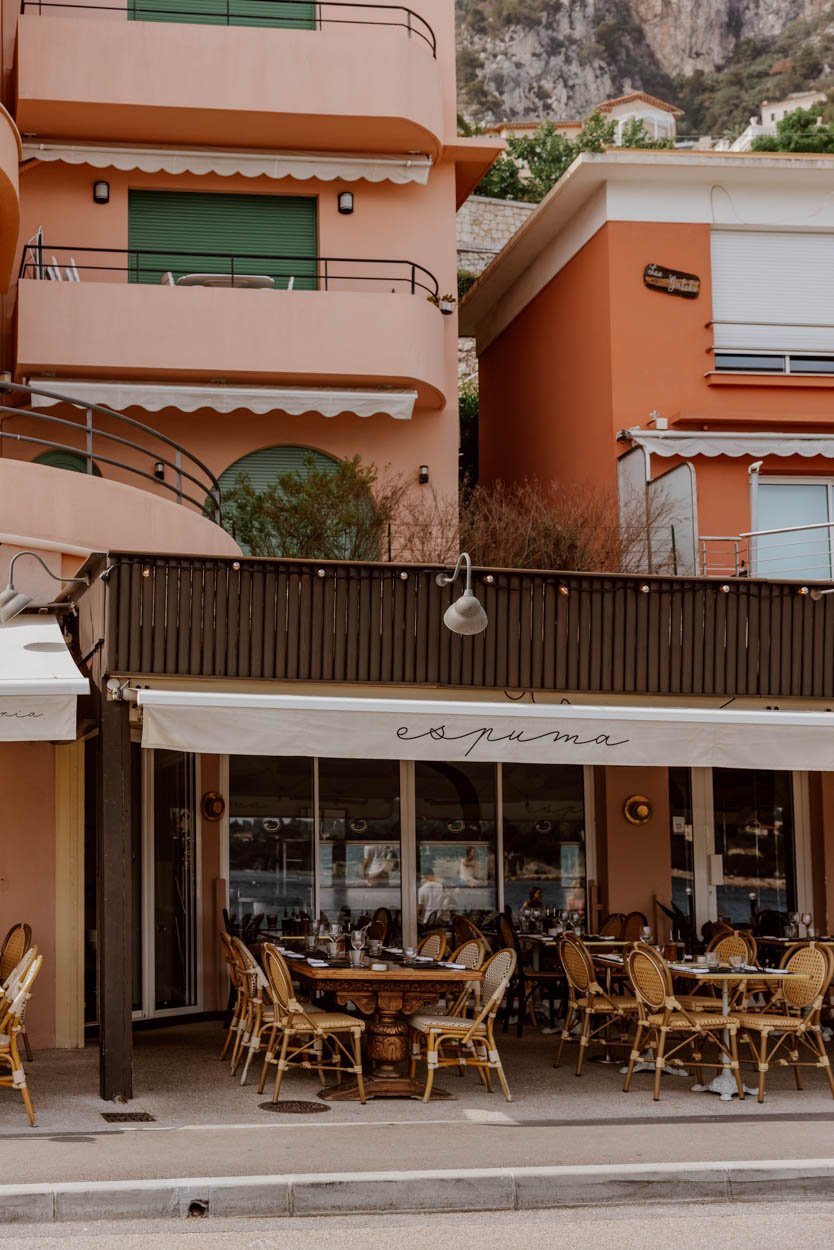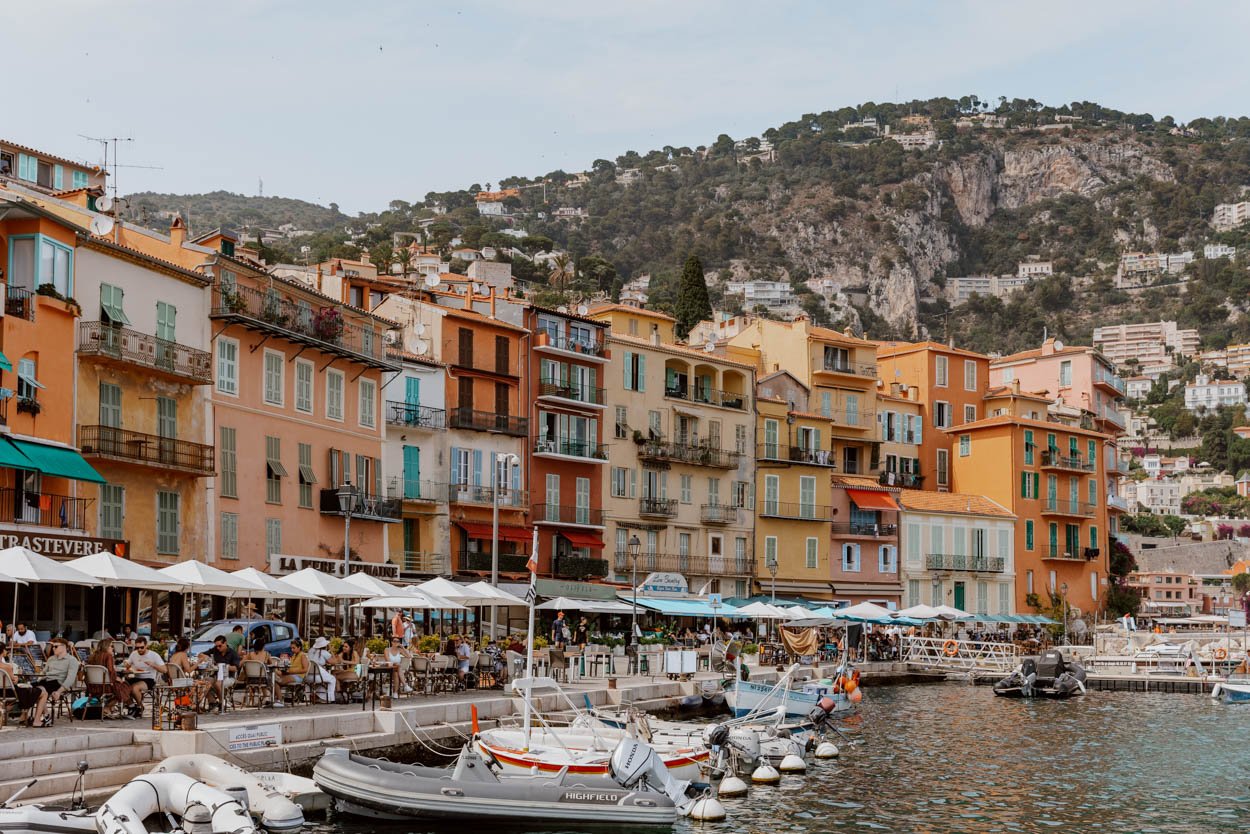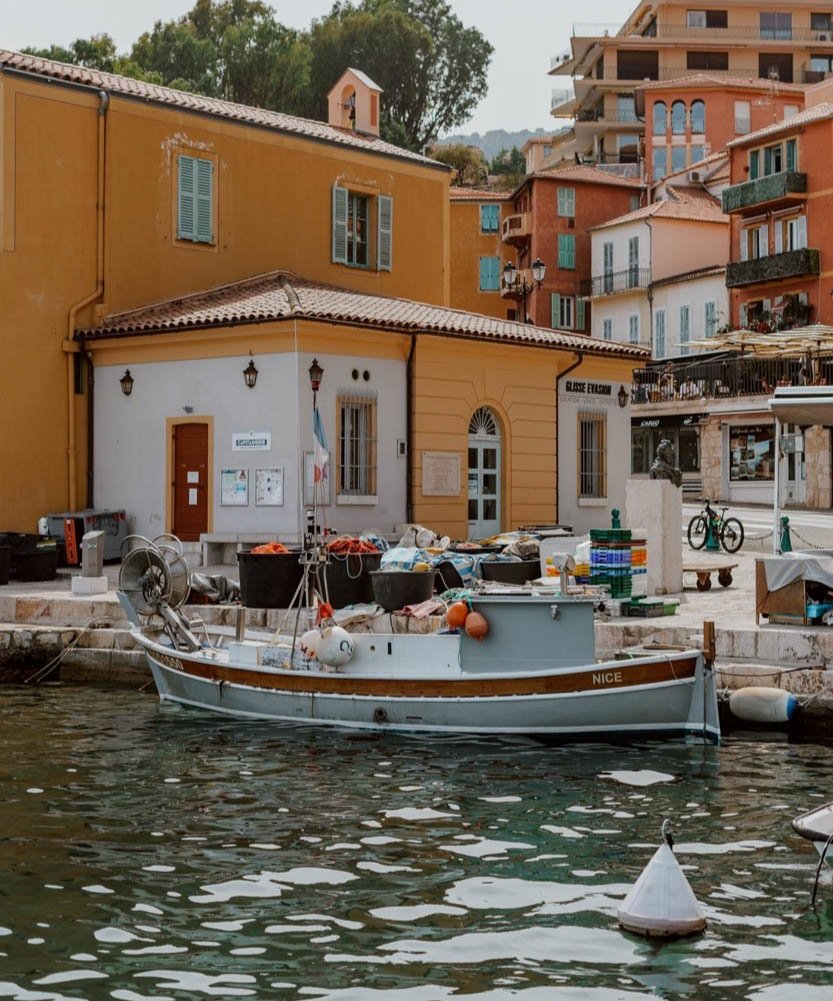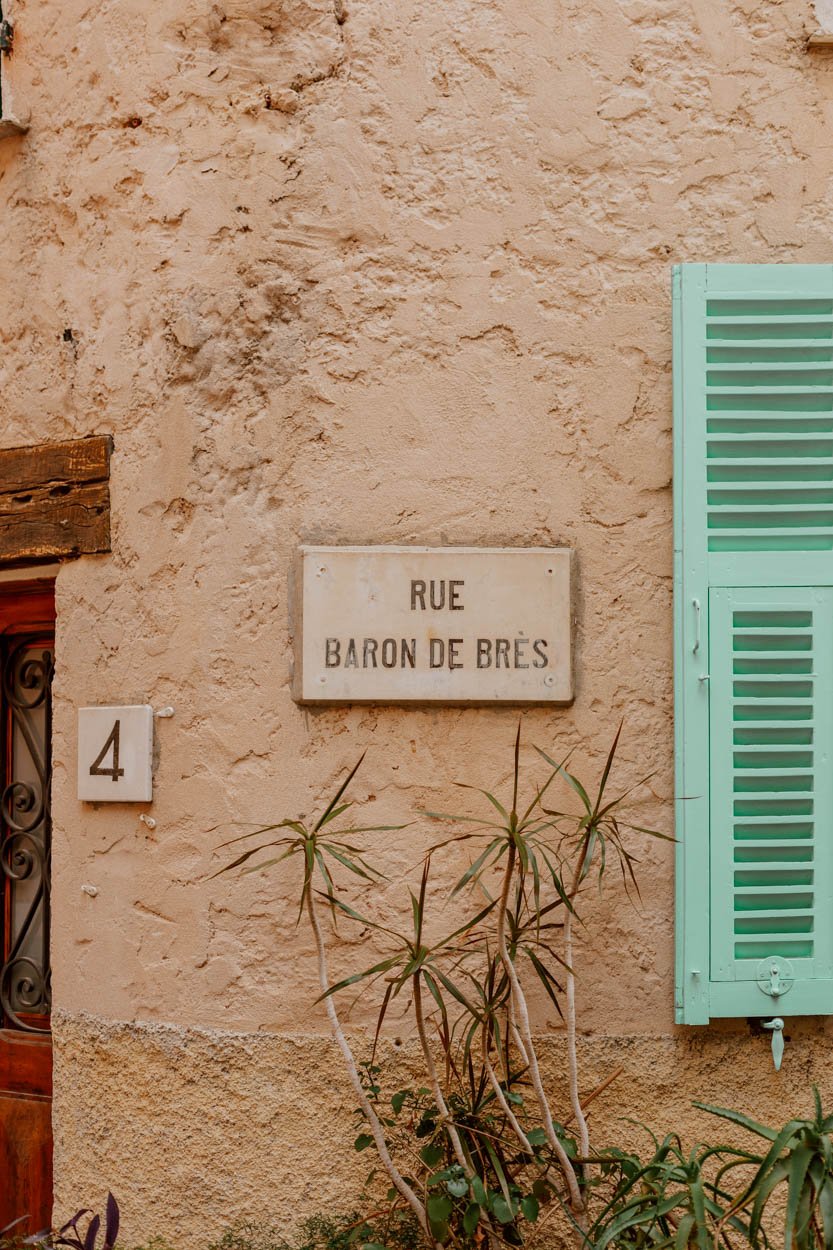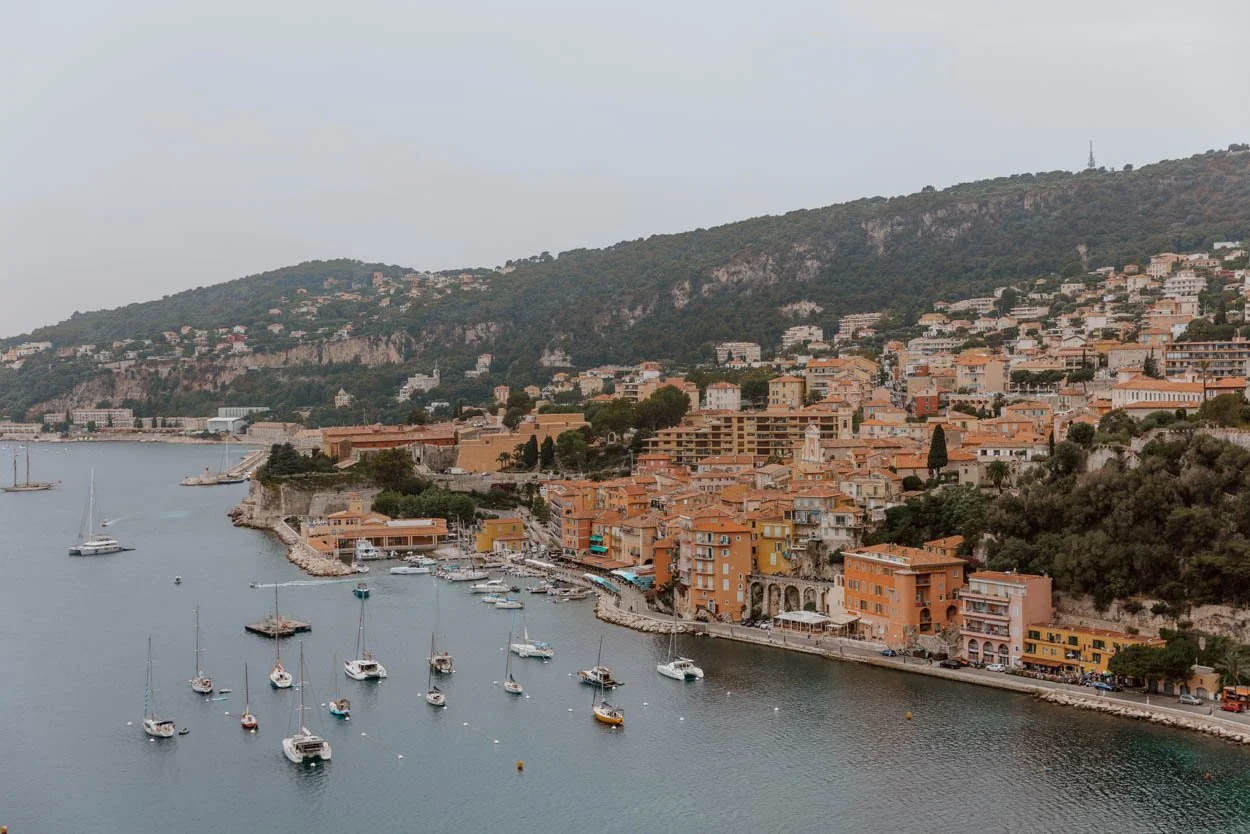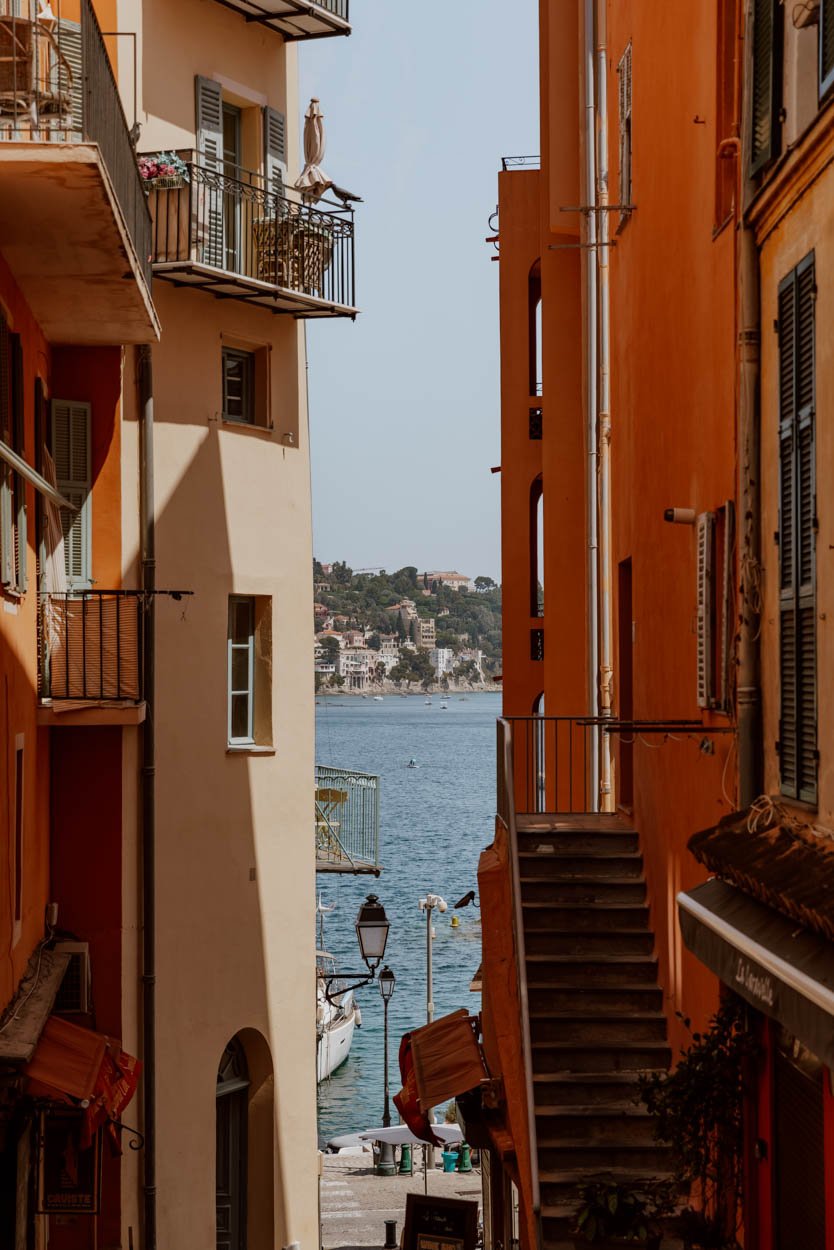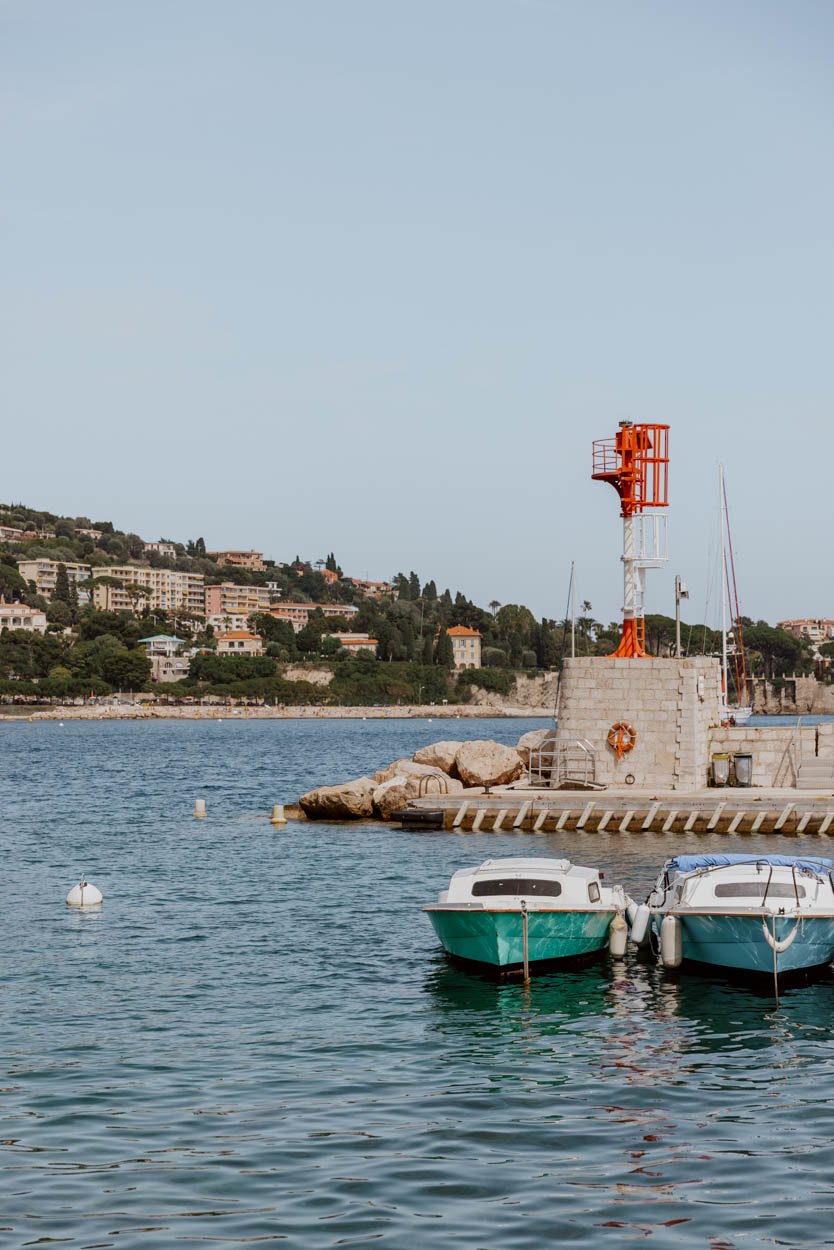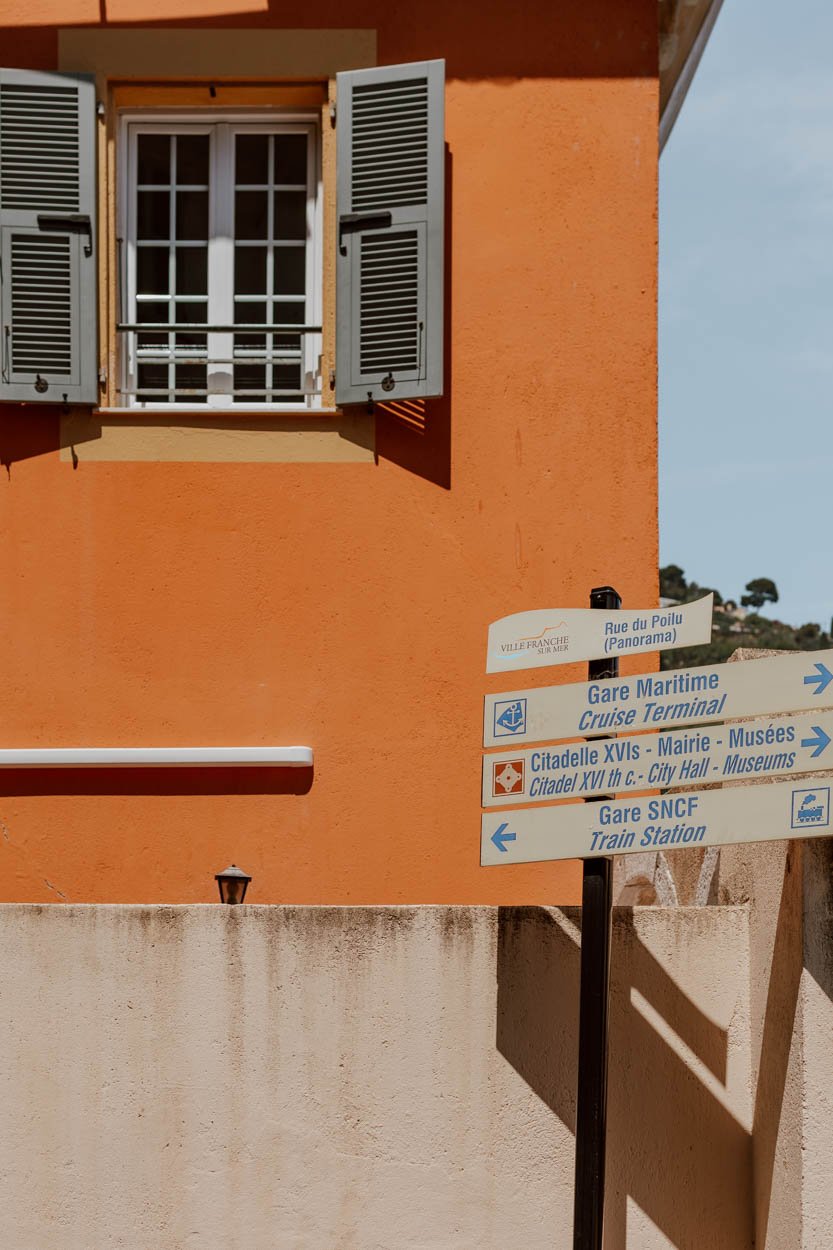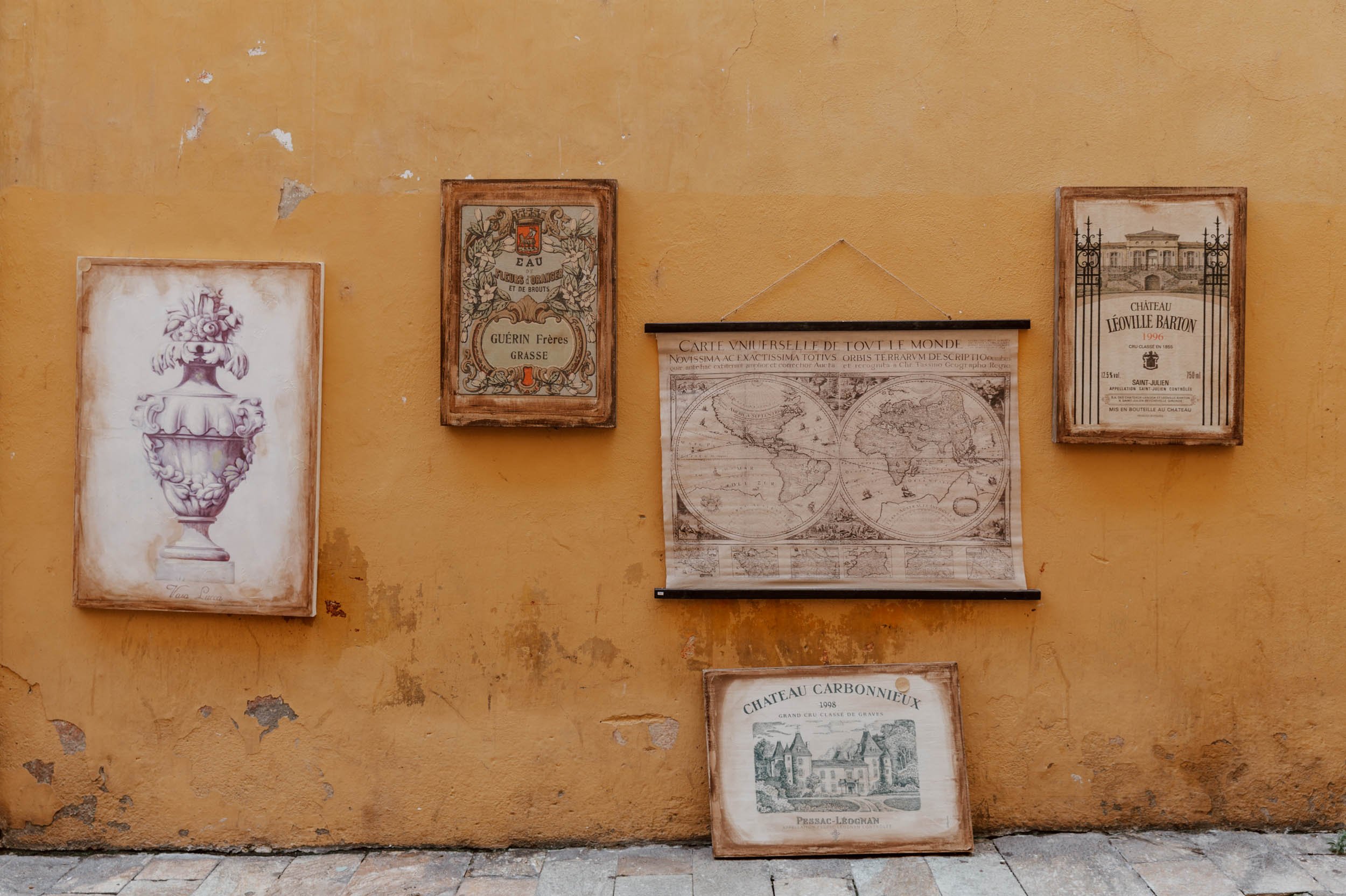Planning a stay or day trip to Villefranche-sur-Mer? Our guide for travellers has got you covered.
Villefranche-sur-Mer is undeniably one of the most beautiful destinations on the French Riviera.
Situated just a stone's throw away from Nice, this idyllic medieval seaside town nestled in a scooped out deepwater bay captures the essence of this corner of Europe.
With its colourful clustered town tumbling down the hill toward the sea, it brought back fond memories of nearby Cinque Terre in Italy, but underpinned by that unmistakable ambience of wealth and exclusivity which permeates parts of the Cote d'Azur.
A superyacht or two bob away in the bay, and the understated tailoring and handbag choices of several clientele at waterfront restaurants betray a healthy bank balance. An easy, popular day trip from Nice or an alternative coastal base to the city, Villefranche-sur-Mer's credentials for a beach day also draws crowds of locals and travellers throughout summer.
Indeed, the only decision you’ll need to make is whether to go left or right out of the train station - do you fancy a lazy beach day or are you more in the mood for sauntering round the town's impeccably pretty medievals streets and viewpoints (although you could easily choose to straddle both).
In this short guide, we’ve shared everything you need to know to plan a stay or a day trip. From the best things to do in Villefranche-sur-Mer, personal recommendations on where to stay and eat, plus tips for transport connections, avoiding the crowds, parking issues, connections with The Rolling Stones, and how to achieve the perfect blend of sightseeing and sunbathing.
This is our traveller’s guide to Villefranche-sur-Mer, France.
villefrance essentials
Vibe / Historic beach town on French Riviera
Nice / Easy day trip either independently or on a tour (by bike, by boat or by three-wheel car)
Admire / The Cocteau Chapel and the views from up high
History / Step back in time at the Citadel
Tour / This combo of historic centre tour and guided paddle board tour allows you to appreciate Villefranche from land and sea!
Stay / The Welcome Hotel or our favourite Airbnb
The Best Things To Do in Villefranche-Sur-Mer
Sunbathe & Swim at The Beach
With shallow, calm turquoise waters and such a photogenic setting, Villefranche-sur-Mer's small beach is rightly regarded as one of the best in the Côte d'Azur.
A coarse sandy (or fine gravel, depending on whether you're an optimist or not) alternative to the large, smooth pebbles of Nice, Plage des Marinières’s ease of accessibility from the train station and child-friendly swimming make it an incredibly popular option amongst day trippers from the city and elsewhere.
Due to this and its narrowness, it can become quite crowded, but the farthest way section is the quietest and cleanest bit; it also gets the sun later in the afternoon, so is a good spot to opt for if you've prioritised wandering around Villefranche-sur-Mer on arrival, but want to savour the last few hours of sunbathing time - find it here on Google Maps.
The swimming and visibility all over is excellent, but note that there's some rocks and quite a drop-off in depth about 10 metres out.
Most of Villefranche-sur-Mer beach is free and open to the public, with only a small private area reserved for paid sun-loungers plus a bar/restaurant.
Where | To the left of the old town, you can walk directly down the steps from the train station to the beach entrance in less than five minutes - here on Google Maps. You then simply have to choose to settle down in the first section (the largest and widest) or continue for a few more minutes along the road find a quieter part of Plage des Marinieres (maps)
Facilities | Unless you're going for a sunlounger at the beach club, you should bring everything you'll need with you for the sand. There a couple of casual snack bar cafes on the road parallel to the beach (La Voile Bleue and La Praia) but a better option may be to walk to the restaurants and cafes on the waterfront by the entrance (just don't arrive in your swimwear!).
There are free public toilets and several showers.
Know | As well as the beach, there's often people swimming, jumping and hanging out on the concrete on the Promenade des Marinières (maps), parallel to the main road and cafes. There is also the little Plage de la Darse on the other side of town (maps), next to the busy port and harbour, but this rocky beach is unlikely to be many people’s first choice.
Wander The Old Town
To the first-timer in this part of Europe, Villefranche-sur-Mer may seem impeccably, unmistakably French.
However, the fortified coastal town only became part of the Republic in 1860, with this final handover marking the end of a complex history of Villefranche-sur-Mer changing hands between various ruling powers.
Founded in 1295 by Charles II of Anjou, the Count of Provence, it became a strategic stronghold of the Dukes of Savoy for nearly five centuries. The Spanish and Ottomans laid siege and occupied it at times, hence the need for the militarised aspects of its urban layout that you can still clearly see today. Finally, under the domain of the Kingdom of Sardinia, it became part of France under the Treaty of Turin.
The foundational role of the Savoys is why - beyond the landscapes - the colour palette and architecture immediately strikes many travellers as more Italian, with striking similarities to the towns and village of Liguria (situated just across the border).
Predictably, one of the best things to do in Villefranche-sur-Mer is to simply wander, get lost, and keep your eyes open for the pockets of beauty - both expected and unexpected - in the cobblestone streets.
The colour palette of the medieval old town is a delightfully easy-on-the-eye blend of painted pinks, oranges, peach, and yellow, offset by green-blue shutters, and pretty doorways adorned with flowers. You could cover most of it in a slow hour or two, and will naturally stumble across its most photogenic spots on your own, but a few places to put in your mobile map are:
Good to Know // It's a bit of a mind-bender, but Keith Richards shacked up in Villefranche-sur-Mer back in the 70s and The Rolling Stones recorded Exile on Mainstreet in his basement. They all quit the UK to escape the government's 93% tax demands - which also inspired Sunny Afternoon by the Kinks and The Beatles’ 'Taxman' - and the guitarist rented the grand 16-room Villa Nellcote. The album was recorded there, as well as many debauched escapades and parties, before Keith had to leave France due to legal issues (no awards if you guess what those related to...)
Spoiler alert though - you can't visit the now Russian-owned house or see it from anywhere in the town except the water. This Guardian article has a bit more on this footnote in musical history.
Travel Tip // Learn more about Villefranche-Sur-Mer’s fascinating history on this unique 2-hour tour which combines a walking town of the old town with a guided paddle-boarding session.
TRAVERSE The Rue Obscure
This curious covered street is worth a stop too.
In its original open state, it ran alongside rampart walls, providing a route for soldiers. When the Citadel was completed in the 16th century (more on that later), the route became redundant, and the town began to grow on and over it until it was completely covered in the 18th century.
Known as the 'Dark Street', the dimly-lit passageway is only about 130-metres long, but citizens used it to store wine barrels, sell goods, and seek refuge at times of war.
Unsurprisingly, given its unique construction and quite creepy medieval vibes, the Rue Obscure helped to establish Villefranche-sur-Mer as a film location in the 20th century. Supposedly over 150 movies and TV shows have been shot in the town, and a quick look on IMDB revealed that it wasn't just obscure French flicks filmed here, but classics such as Never Say Never Again, The Red Shoes, Ronin, To Catch a Thief, Ronin and, Andrew's personal favourite, Jean-Claud van Damme's Maximum Risk.
Where | You can find the entrances and exits to the Rue Obscure of here and here in the old town of Villefranche-sur-Mer.
Eat & Drink Along The Waterfront
Whilst the narrow, pastel-coloured streets of the old town are reminiscent of many other places France and Italy, the waterfront of Villefranche-sur-Mer could only be on the French Riviera.
Quai de l'Amiral Courbet (maps) has a handful of restaurants, with some leaning toward the finer side of fine-dining, with tables on the waterfront offering views of the boats, the bay, and the blues of the water.
If you're here for just a day, and not prioritising the beach, this is the place you'll want to lunch at or at least stop for a drink.
A few of our recommendations include:
Dry
La Mère Germaine
Olivula
Espuma
Good to Know // There’s a very photogenic area on the right of the Quai with fishing kit and boats, and a small plaque nodding toward its pivotal role in football history. From here, the French football team and FIFA president Jules Rimet set sail for the very first World Cup in 1930. Held in Uruguay, the competition was created by Rimet, which is why the original trophy (recovered by a dog called Pickles in 1966) was named after him.
Admire The Cocteau Chapel
A visit to Villefranche-sur-Mer and nearby Menton was our first encounter with the creative mind of Jean Cocteau.
One of the foremost members of the surrealist, avant-garde, and Dadaist movements, the filmmaker, illustrator, poet, and playwright, he is also regarded as one of the most influential figures in early 20th-century art.
He stayed at the Welcome Hotel in Villefranche-sur-Mer for ELEVEN years (which permits us to hopefully be the first people to ever draw comparisons between Jean Cocteau and Alan Partridge), and his fondness for the town ran deep.
His star-studded semi-biographical film - The Testament of Orpheus - was one of the many filmed here, but Cocteau's most lasting gift was the restoration of the Saint-Pierre Chapel - a unique, vibrant fusion of religious symbolism and modern artistry.
Encouraged by a local friend to take the commission in 1957, he primarily did it as a show of love and respect to the local community of fishermen who owned it. Every inch of the tiny chapel bears his unique touch and craft, and he was responsible for everything you see top to bottom, inside and out.
There are abstract Bible senes, a musical score composed specifically for the church, and the breathtaking interior is unlike any place of worship we’ve visited anywhere.
When | Some travellers far less ignorant than us of Cocteau's work and reputation may be visiting Villefranche-sur-Mer specifically to see the Chapel in person. If that's the case, to avoid disappointment, please make sure to plan your stay or day trip to Villefranche-sur-Mer around its rather restricted openings.
It’s open Wednesday - Sunday, from 9.30am-12.30pm, then 2pm-6pm. We highly recommend you arrive at least 15 minutes before any closing time.
Entry is €4 per person (15 years and over), and no photos are permitted inside.
Where | The Cocteau Chapel (maps) is next to the Quai and Maritime Station, and just down the steps from Place Amelie Pollonais. The latter is a good spot for a drink and offers more affordable lunch/dinner options than the Quai, with Les Palmiers offering a decent beer selection. From the square you can also get the best ‘eyes-to-eyes’ view of the Chapel facade.
Art & Museums At The Citadel
The 16th century citadel was built to protect against incursions and attacks by sea, and was used as a US Navy base after World War II. Converted to house the Town Hall and several museums in 1981, today it’s the main cultural centre in town. Also known as Fort Saint-Elme, it includes:
The Volti Foundation, with various works by the French sculptor
The Goetz Boumeester gallery, with contemporary paintings
The Roux Collection, focussing on ceramics and figurines
There are also temporary open-air installations and exhibitions, as well as festivals.
Where + When | You can find the Citadel and its museums a short walk from the waterfront and old town - here on Google Maps. In summer, opening hours are 10am-7pm, and entry is free.
For more information on current exhibitions at the museums, check out the official website.
Travel Tip // Whilst here, take a moment to walk along the narrow 'Chemin de Ronde' pathway to the Port de Villefranche-sur-Mer (maps). Home to all sorts of boats and yachts, this deep, natural harbour was pivotal to development of the French Riviera, and continues to be a calling point for those exploring the coast by water.
Head UP To The Best Viewpoints of Villefranche-sur-Mer
Promised sweeping views, we dutifully headed up the steep streets to the newer part of town atop the hill, past Torre Vecchia, and on to a busy road with but a slither of pavement running alongside it.
Eventually, we arrived at the viewpoint - a sweeping view of the coast and out across the sea - which delivered despite the weather now being a tad overcast.
What we didn’t realise however, was that the viewpoint was much more easily accessed by a convenient set of stairs straight up to it from the sea!
Where | The viewpoint can be found here on Google Maps, at the side of the busy Boulevard Napoleon III, and the stairs to reach it can be accessed here - go right for the viewpoint, or left for the old town and more circuitous 20-minute route.
Travel Tip // For those seeking a moment of tranquility, a leisurely hike up the nearby Fort du Mont Alban (maps) rewards hikers with panoramic views of the coastline and the lush greenery that blankets the surrounding hills.
It’s also home to the alternative ‘best view’ of Villefranche-sur-Mer.
Set within Parc du Mont Boron, but not a museum and usually open to the public, it offers pretty spectacular-looking views back on Nice and Saint Jean Cap-Ferrat, as well as over Villefranche.
Alternatively, if you’re basing yourself in Nice but would like to visit both Fort du Mont Alban and Villefranche-Sur-Mer but are a little limited on time, consider joining this super popular guided scenic drive in your own three wheel vehicle - we actually saw a group drive past us when we were at the viewpoint and it looked like great fun! Find out more here.
Where To Stay in Villefranche-sur-Mer?
There is nothing on or behind the beach, with the old town offering the best accommodation optons.
Many will have beautiful bay views, whilst some may be set back in picturesque cobblestone alleys. Staying slightly above, in the new town, isn’t a bad idea either, but accommodation on the port side of the city isn’t going to be the ideal option for some.
For those planning on lots of day trips, being a convenient walk from the train station is something to consider.
If you have a rental car, we recommend contacting your property or host to advise on parking options; many will not have private on-site parking or access by vehicle.
Hotels in Villefranche-Sur-Mer
Welcome Hotel | Located right on the waterfront - just a stone’s throw from Villefranche’s best restaurants - The 4*Welcome Hotel was home to Cocteau for more than a decade and continues to be a super popular choice for those that enjoy classic design, comfort and wonderful balcony views. Find out more here.
Hotel Provencal | A short walk (albeit uphill) from the harbour, this hotel has a more modern vibe and benefits from a gorgeous garden, and incredible views over the coast. Lots of excellent reviews. Find out more here.
If you’d prefer a pool, be sure to check out Hôtel La Fiancée du Pirate, whereas those on a bit of a budget should consider the always popular and well-priced Hotel La Regence.
Airbnbs & Apartments in Villefranche-Sur-Mer
La Gleia | If you’re a long-term reader of Along Dusty Roads, you’ll know that our design preference, especially when it comes to holiday rentals, errs very much on the side of contemporary (with a dose of mid-century furniture thrown in for good measure). For this reason, our favourite Airbnb in Villefranche-Sur-Mer is the gorgeous La Gleia, located at the entrance of the old town.
Another favourite is this immaculately decorated one-bedroom apartment with gorgeous balcony views.
The Villa La Marmotte | An ideal option for those seeking a base in the Cote d’Azur, this gorgeous 2-bed villa offers multiple patios, a private garden, a panoramic roof top terrace and has an abundance of just incredible reviews. Find out more here
If your ears pricked up ‘panoramic terrace’ but your vibe is more luxurious modern apartment, take a look at the highly-rated La Terrasse and La Baie.
Other popular and highly-rated two bedroom apartments include this modern option, and this one with outstanding views.
Whilst accommodation prices along the French Riviera tend to be a little on the high side, there are a handful of really great value apartments in Villefranche including: Coeur de Village, Unique & Peaceful Apartment, Bay Retreat With Sunlit Terrace and this stylish duplex apartment.
If you’re travelling with friends or are a family requiring at least three bedrooms take a look at this beautiful, colourful and a little traditional apartment or this absolutely gorgeous property offering more of a coastal bohemian vibe.
How Long Do You Need in Villefranche-sur-Mer?
The little town by the sea would be a great base on the French Riviera, especially if you prefer a quieter, more intimate setting than Nice or Monaco.
There are a good selection of accommodations available for various budgets and more than enough restaurant choices, whilst the train connections make it ideally situated for day trips along the coast.
With that said however, the pace, size, and exclusive setting may not suit all travel styles and budgets for longer stays. The pick of the restaurants in the old town and on the waterfront will work out at around €60 a head for glass of wine and two courses, and there aren't too many alternatives to choose from.
We spent a whole day here, but could have happily stayed for three nights. A car isn’t essential if using Villefranche as your Riviera base, with most day trips and beaches easily accessible by train, bus, or on foot.
How To Get To Villefranche-Sur-Mer
On an excellent train line, accessible on foot or two wheels and with decent (if expensive) parking, Villefranche-Sur-Mer is easily accessible from most places on the French Riviera.
By Train
There are super regular trains that travel between Cannes and Menton (at least two and hour in the summer season) and serve Villefranche-Sur-Mer train station, handily located in the centre of the town.
A single ticket from Nice costs €2.10, and a day return for €4.20.
By Bus
The number 80 bus from Nice terminated right to the town’s beach, and picks up there too - find timetables and stops on the Lignes d’Azur website.
On Foot or by Bicycle
Given that it's just an hour away, we had originally planned to walk to Villefranche-sur-Mer from Nice, along a coastal trail and then take the train back; we maintain that this would have been a lovely way to travel between the two.
It’s also possible to hire a bicycle in Nice (either via the city bike hire scheme, Velo Bleu, or from one of the city’s many bike rental shops) and cycle along the designated bike route to the town, or alternatively, join this super popular and highly rated e-bike tour that takes you all the way to Fort du Mont Alban.
By Boat
If you don’t have a spare few thousand pounds to splurge on private yacht hire, the good news is that it’s still possible to experience the French Riviera by boat; this two-hour group tour has excellent reviews, is well-priced and travels from Nice to Monaco, Eze, Saint Jean Cap Ferrat and the bay of Villefranche-Sur-Mer (plus includes time for swimming.
Alternatively, if you’d prefer to maximise your time in the water, this tour speedboats you out to Villefranche Bay for lots of snorkelling in the crystal clear waters.
By Car / Parking
As Villefranche-Sur-Mer, and the coastal towns of the French Riviera in general, are so well-connected, public transport is going to be much easier for most visitors and day-trippers. With that said however, if you’re on a longer southern France trip, then you may well opt for a rental car.
There is parking on the narrow road running parallel to the beach, and a a larger private car park at the end of the road (here on Google Maps). It is expensive though at €10 for 5 hours, €16 for 8 hours etc.
Another option is the Wilson car park by the Gare Maritime (maps). It has space for about 40 cars and is a very convenient to walk into the old town or along the front to the beach. However, it’s also quite expensive at €4 for 2 hours.
If you find a better option, let us know in the comments.
Top Tip // We rarely go direct when hiring our road trip vehicles, instead preferring to use two popular rental aggregators to compare costs and find the best deal. The two companies we use are AutoEurope and RentalCars - both of which we have had excellent experiences with.
Where to Next?
13 Wonderful Things to Do in Nice
The Best Day Trips From Nice (published soon)
A Complete Guide to Menton (published soon)

